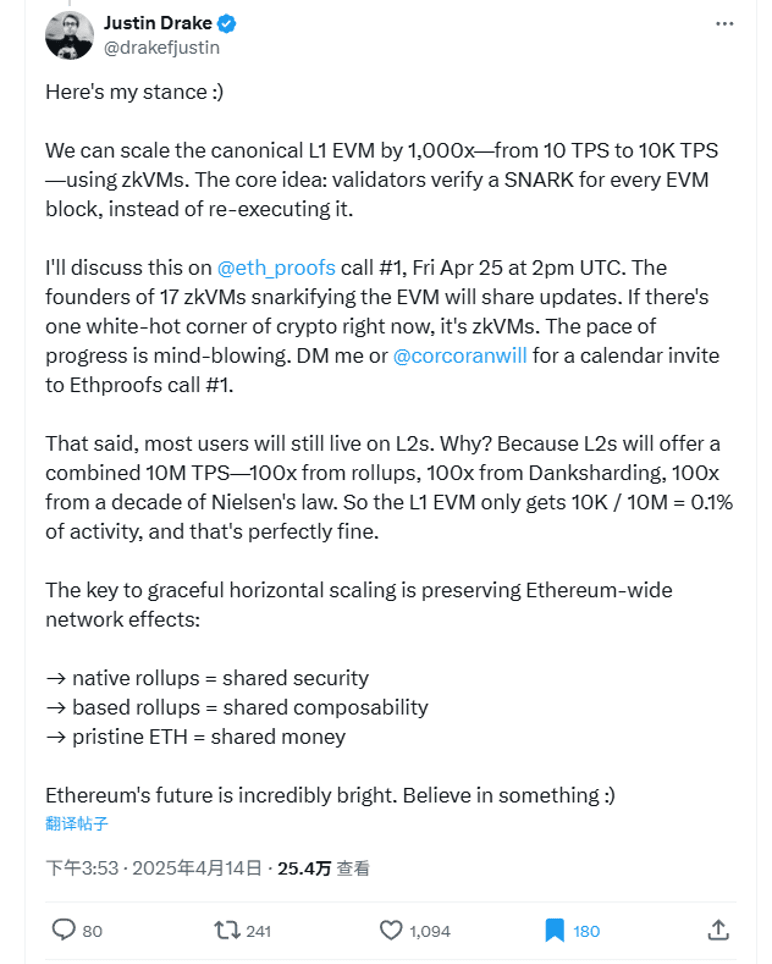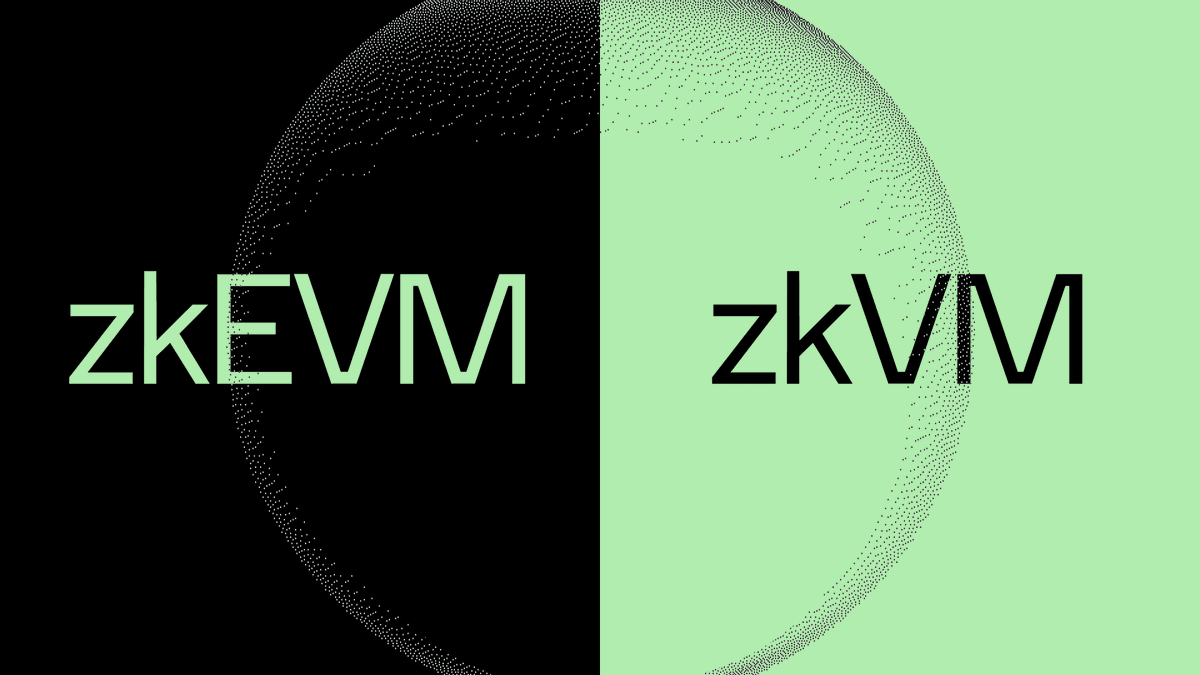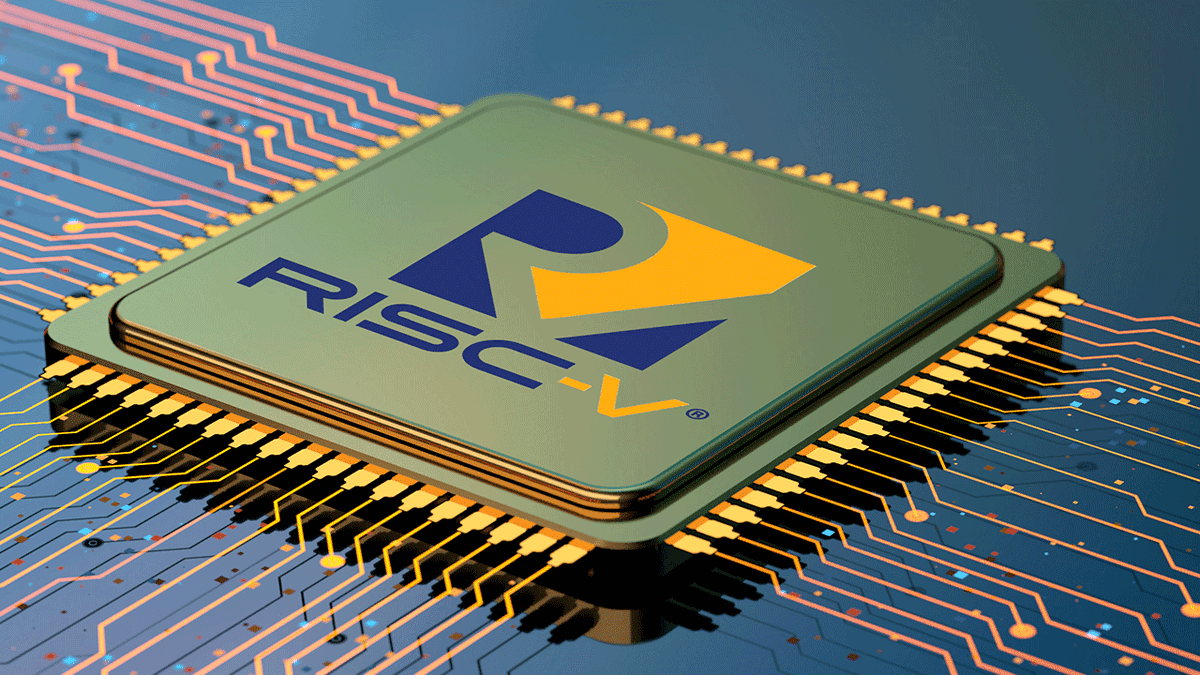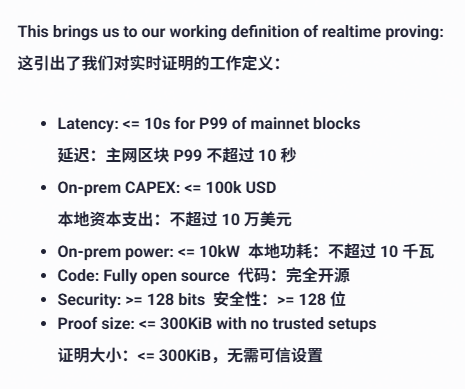Last week, the Ethereum Foundation officially announced that Ethereum L1's own zkEVM will be launched within a year.
If you ask what the most important thing for Ethereum in the next five years is, our answer is clear—refocusing on L1, making L1 faster, in other words, L2 is already fast enough.
The ZK implementation of Ethereum is one of the most important paths (not discussing increasing gas limits here).
According to Drake's previous viewpoint, once ETH L1 is fully ZK-enabled, TPS is hopeful to increase to 1000.

This is easy to understand; it is determined by the transaction method.
【Current ETH Transaction Model】
As a user, you draft a transaction and submit it, while I, as a node (miner), use my own equipment to help you execute and run this transaction. Considering that there are 1 million nodes in the Ethereum network that need to reach consensus, this step is not going to be fast, so Ethereum's TPS is suppressed to around 60.
【The ZK-enabled ETH Transaction Model】
It becomes a direct transaction between users, where the user proves their payment and the nodes only need to verify this proof. It is well known that a major feature of ZK is the very fast verification speed, which does not always require consensus. This way, the concurrency can increase significantly.
Statements like 'making Ethereum the largest ZK organization in the world' are empty, while the actual increase in TPS by dozens or even hundreds of times is the real deal.
Additionally, it should be noted that this upgrade is for zkEVM. It is a transitional phase running in parallel with the current EVM, serving as a mid-term solution.
A full ZK implementation requires zkVM.

A letter difference actually represents different phases, and the overall timeline is approximately:
【Short-term (within 1 year)】: Optional zkEVM on L1 for block validation, starting first with ZK clients (like Zeth).
【Mid-term】: Increase gas fee limits, establish zkVM, and combine a hybrid model of re-execution and proof.
【Long-term】: Fully transition to RISC-V or similar architecture, native zk-rollups, and ZK default consensus.
PS: Of course, we are not so optimistic about the RISC-V architecture. A brief explanation is necessary: what exactly is RISC-V? Without delving into too much jargon, it is an open-source instruction set architecture that competes with Intel or AMD's CPUs and is a very fundamental technology.

Simply put, a more advanced and powerful EVM is sufficient.
However, RISC-V is still quite slow now, and although it has great potential, it still has a distance to cover compared to Intel and AMD.
Back to the main topic.
This zkEVM upgrade still means 'first making it tough for the nodes.'

In addition to running the normal execution layer client (old EVM), nodes can freely choose whether to run a ZK version of the execution layer client (new zkEVM), allowing both to run together for a smoother transition.
To help users and developers gradually familiarize themselves with the existence of zkEVM.
Ultimately, it will slowly lead Ethereum towards full ZK implementation, achieving a highly secure and decentralized Ethereum L1 with excellent performance.
This content is jointly published by Nothing Research, Ebunker, and Ourbit.

